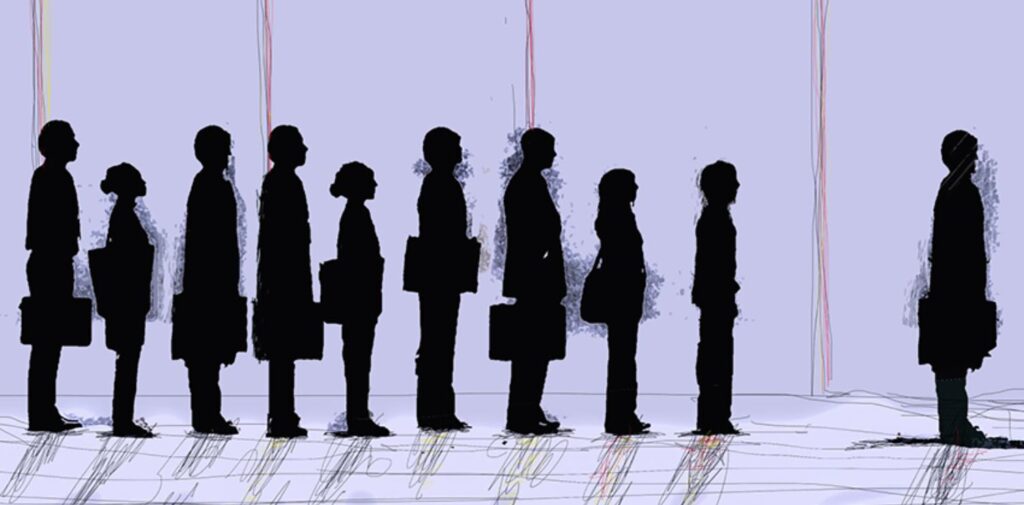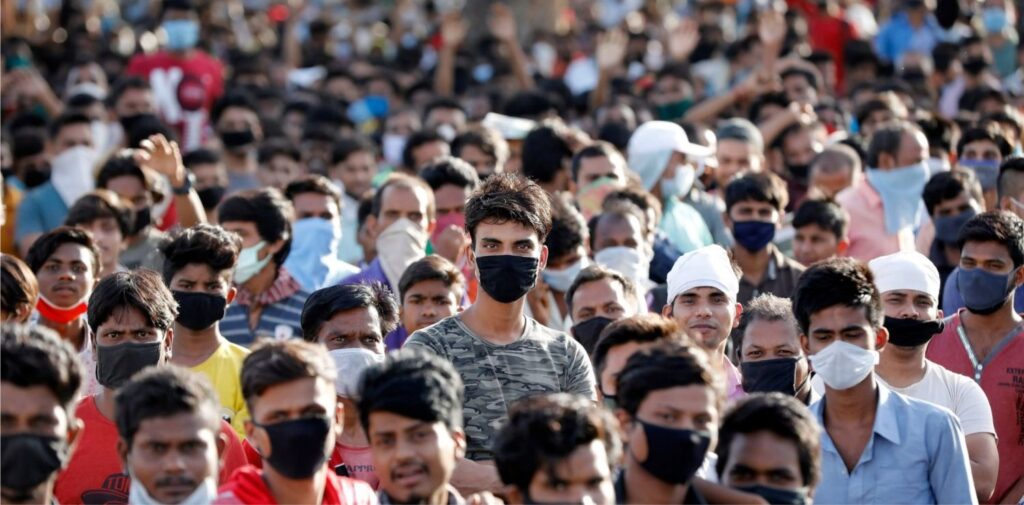As India strides into the fiscal year 2024 (FY24), the youth unemployment rate across various states and Union Territories (UTs) paints a concerning picture. With rising aspirations and an evolving job market, the statistics reveal a narrative of struggle and resilience among the nation’s youth. While some states are witnessing encouraging employment rates, others grapple with alarmingly high figures. This article explores the current state of youth unemployment in India, examining the causes, implications, and potential solutions to this pressing issue.

The Data at a Glance
The youth unemployment rates in various Indian states and UTs for FY24 reveal significant disparities. Here’s a snapshot of the unemployment rates:
- Andhra Pradesh: 17.5%
- Arunachal Pradesh: 20.9%
- Assam: 14.1%
- Bihar: 9.9%
- Chhattisgarh: 6.3%
- Delhi: 4.6%
- Goa: 19.1%
- Gujarat: 3.1%
- Haryana: 10.7%
- Himachal Pradesh: 16.3%
- Jharkhand: 3.6%
- Karnataka: 10.2%
- Kerala: 29.9%
- Madhya Pradesh: 2.6%
- Maharashtra: 10.8%
- Manipur: 22.9%
- Mizoram: 13.3%
- Nagaland: 27.4%
- Odisha: 11.1%
- Punjab: 18.8%
- Rajasthan: 12.4%
- Sikkim: 7.7%
- Tamil Nadu: 15.3%
- Telangana: 16.6%
- Tripura: 6.8%
- Uttarakhand: 9.8%
- Uttar Pradesh: 9.1%
- West Bengal: 9%
- Andaman and Nicobar: 33.6%
- Chandigarh: 10.3%
- Jammu & Kashmir: 17.4%
- Ladakh: 22.2%
- Lakshadweep: 16.2%
- Puducherry: 14.6%
From these figures, several key insights emerge, providing a glimpse into the challenges faced by the youth in different regions.
Understanding the Landscape
Kerala and Andaman & Nicobar: The most alarming figures come from Kerala (29.9%) and the Andaman & Nicobar Islands (33.6%), showcasing a youth employment crisis. Despite Kerala’s reputation for high literacy and educational attainment, the job market has struggled to absorb the influx of graduates. This contradiction highlights the mismatch between education and job availability, a challenge that requires urgent attention.
Delhi and Gujarat: On the other hand, Delhi (4.6%) and Gujarat (3.1%) boast impressively low youth unemployment rates. These states have established themselves as economic hubs, attracting industries and startups, creating a plethora of job opportunities for young professionals. Their economic strategies and policies focused on job creation offer valuable lessons for other states.
The Middle Ground: States like Haryana (10.7%), Maharashtra (10.8%), and Karnataka (10.2%) show moderate levels of youth unemployment. These regions are home to burgeoning technology sectors and diverse industries, yet the competition for jobs remains fierce, often leaving many young job seekers struggling to secure employment.

Factors Contributing to Youth Unemployment in India
Understanding the nuances of youth unemployment in India requires a deep dive into the factors influencing these statistics:
Educational Mismatch: One of the primary reasons for high youth unemployment is the mismatch between education and market demand. Many young graduates find themselves ill-prepared for the skills required in the job market. Educational institutions often emphasize theoretical knowledge over practical skills, leading to a workforce that is not job-ready.
Economic Disparities: The economic landscape of India is marked by stark regional disparities. States with robust industrial growth and investment opportunities tend to have lower unemployment rates, while those that are economically lagging struggle to create sufficient jobs. This disparity exacerbates the challenges faced by the youth in less developed states.
Policy and Infrastructure: Effective governance and policy frameworks play a crucial role in addressing youth unemployment. States that invest in skill development, vocational training, and entrepreneurial support tend to witness lower unemployment rates. Infrastructure development also significantly impacts job creation, as improved connectivity attracts businesses and industries.
Impact of the Pandemic: The COVID-19 pandemic has left a lasting impact on employment trends, exacerbating youth unemployment in many regions. Industries like tourism, hospitality, and retail, which traditionally employed a significant number of young individuals, were severely hit, leading to job losses and reduced hiring.

The Consequences of High Youth Unemployment
The ramifications of high youth unemployment extend far beyond individual livelihoods; they affect societal stability and economic growth:
Social Unrest: Prolonged unemployment among the youth can lead to frustration and social unrest. Disillusioned young people may resort to protests or even criminal activities, posing a challenge to law and order.
Economic Implications: A large unemployed youth population is a drain on resources and can hinder economic growth. Unemployment leads to reduced consumer spending, impacting businesses and overall economic development.
Brain Drain: High unemployment rates can drive talented youth to seek opportunities abroad, resulting in a loss of skilled individuals who could have contributed to the nation’s growth. This brain drain not only affects the states but the country as a whole.
Towards Solutions: Bridging the Gap
Addressing youth unemployment in India requires a multi-faceted approach:
Skill Development Initiatives: Governments and educational institutions must focus on enhancing skill development programs that align with market demands. Vocational training, internships, and apprenticeships can equip youth with practical skills and work experience, making them more employable.
Entrepreneurship Support: Encouraging entrepreneurship among the youth can create new job opportunities. Providing access to funding, mentorship, and resources can empower young individuals to start their own ventures.
Regional Development: Targeted efforts are needed to uplift economically lagging states. Infrastructure development, attracting investments, and creating industry-specific zones can stimulate job creation in these regions.
Policy Reforms: Policymakers must focus on creating a conducive environment for businesses to thrive. Streamlining regulations, reducing bureaucratic hurdles, and incentivizing job creation can help tackle youth unemployment effectively.
Awareness Campaigns: Raising awareness about career options, skill development programs, and entrepreneurial opportunities can guide youth in making informed choices. Collaboration between governments, industries, and educational institutions is crucial for effective outreach.
Conclusion
The youth unemployment rates across Indian states and UTs in FY24 present a pressing challenge that demands immediate attention. While some regions thrive, others face daunting obstacles that hinder the potential of their youth. By understanding the root causes and implementing targeted solutions, India can harness the power of its young population to drive economic growth and social stability. The future of the nation lies in its youth, and it is imperative to invest in their potential to ensure a prosperous tomorrow.




